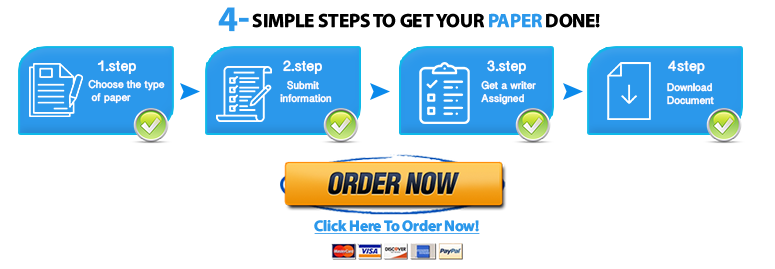Economic
Save your time - order a paper!
Get your paper written from scratch within the tight deadline. Our service is a reliable solution to all your troubles. Place an order on any task and we will take care of it. You won’t have to worry about the quality and deadlines
Order Paper Now
Part A – Essays (about 15 words per point)
- 10 pt Discuss the relationship between tunneling/focusing and deciding/choosing
- 10 pt John enjoys expensive stuff. He also prefers to see himself as an ascetic (someone who lives very modestly). If his will power over his behavior was stronger than over his preferences, how would he solve this seeming contradiction? What if it was reversed?
- 30 pt We often hear the phrase “Time is Money.” Discuss how wage rate, wealth, time preference and time constraint impact our perception of the value of time.
- 20 pt Compare and contrast how financial slack and temporal slack affect decision making.
Part B- Problems
- 20 pt Pat realizes they need to change their life. They are considering either renovating their home, or transforming their sense of appreciation. Either way will cost them C. Their utility function is
- = V B ,
where V is the value of their home, and B is sense of appreciation.
The value of their home starts at V0 = 10, and if renovated will be worth
- = (1+V0 )* C 1/2
Their sense of appreciation starts at B0, and if transformed becomes B = B0 + .2*(1-B0) .
- Fill in the following table:
| B0 | C | V
(renovated) |
B
(transformed) |
U if renovate
(no transformation) |
U if transform (no renovation) |
| .1 | 1 | ||||
| .3 | 1 | ||||
| .5 | 1 | ||||
| .1 | 4 | ||||
| .3 | 4 | ||||
| .5 | 4 | ||||
| .1 | 9 | ||||
| .3 | 9 | ||||
| .5 | 9 |
Show your work, or the spreadsheet formulas.
- What does imply about when Pat pays for renovation or transformation? Hint: consider the relative utilities.
- 30 pt Assume Jane is considering self-improvement training for either emotional or rational strengthening. The training affects her will power over events in the following way:
| Training | Will Power over the present | Will Power over the next year | Will Power over two years |
| Emotional | .6 | .1 | .05 |
| Rational | 0 | .3 | .6 |
She is faced with two possible sequences of Natural Probabilities of feeling successful. One declines over time, and the other stays constant (as shown in the table below). Let her experience of utility from the trainings be equal to the discounted value of the changes in probability (δ is the discount rate):
PV of training = ∆ Prob 0 + ∆ Prob1 / (1+ δ) + ∆ Prob2 / (1+ δ)2
Where ∆ Prob = Nomicity after training – Natural probability
When she’s feeling anxious she discounts at the rate of 100% a year. When she’s calm, she discounts at the rate of 10% a year.
- Fill in the following table. Describe the ways her state of mind affect her decision making. Make sure to show all your work or include your spreadsheet formulas .
- How does this affect how to sell the different types of training?
| Training | Natural
Prob In the present |
Natural
Prob Over the next year |
Natural
Prob Over two years |
∆ Prob In the present | ∆ Prob Over the next year | ∆ Prob Over two years | Present Value when Anxious | Present Value when Calm |
| Emotional | .75 | .5 | .25 | |||||
| Rational | .75 | .5 | .25 | |||||
| Emotional | .5 | .5 | .5 | |||||
| Rational | .5 | .5 | .5 |
- 50 pt Paul has an opportunity for a job that increases his income $20,000 a year for the rest of his career. However, the firm might be moving. The uncertainty about moving (σt ) increases with how far in the future it is considered, and is represented by σt = exp(t) . Let his ability to handle uncertainty be described by h = 100. This means if the uncertainty at t years is less than h, he does not discount the future. However, he can reduce the uncertainty he has to handle by discounting future years by exp(-pt), where p is the discount rate, using the formula for discounted uncertainty:
exp(-pt)* σt
** Hint: To find minimum discount rate, determine the smallest p necessary so that exp(-pt)* σt <= h
However, that also means it changes his perception of the maximum transition cost to take the job, C*. That perception is determined by the present value of extra income through years into the future and its associated discount rate, using the formula:
PV(p, T, Extra Income per Year) = ∑ =1 ( ∗ (1 + )− )
** Hint: If using excel, consider its PV function
- Fill in the following table (make sure to show all your work):
| Year into the future focused on | Uncertainty about Moving (σt ) | Minimum Discount
Rate to Handle Uncertainty (p) |
Maximum
Transition Cost (C*) |
| 1 | |||
| 2 | |||
| 3 | |||
| 4 | |||
| 5 | |||
| 6 | |||
| 7 | |||
| 8 | |||
| 9 | |||
| 10 |
- What is the Maximum Transition Cost he would be willing to pay, and its associated discount rate and years into the future?
- The company offers him a free stress reduction program that triples his capacity to handle uncertainty. Recalculate the answers for b).
- Did the company make it more likely he would take the job? Explain what happened to Paul’s time horizon and discounting.
"Looking for a Similar Assignment? Order now and Get 10% Discount! Use Code "Newclient"




